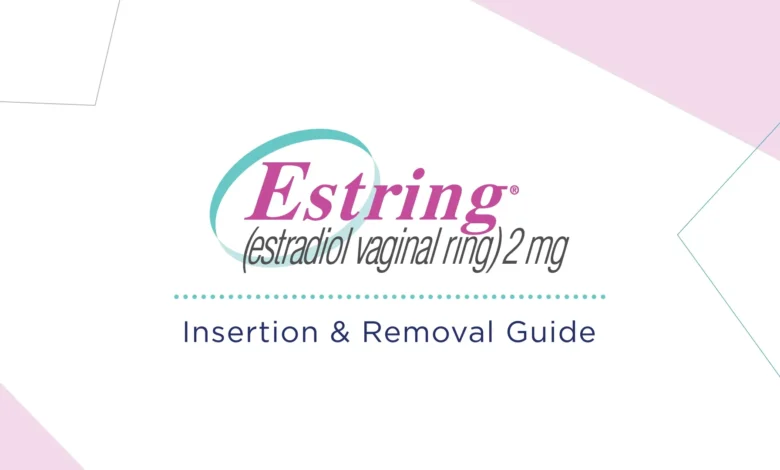
Menopause is responsible for big changes in a woman’s body mainly because of decreased estrogen production.
This brings uncomfortable symptoms like vaginal dryness, burning, itching, and discomfort during urination or sexual intercourse.
Estring is a hormone-based medication that provides relief for these specific menopausal symptoms by providing localized estrogen therapy.
What is Estring?
It’s a vaginal ring containing estradiol, a form of estrogen needed for many bodily processes.
Designed for post-menopausal women, Estring focuses on moderate to severe menopausal changes in and around the vaginal area.
The soft, flexible ring is inserted into the vagina where it releases estrogen directly through the vaginal wall, for targeted relief and minimal systemic absorption.
Usage and Mechanism
The Estring vaginal ring releases a consistent amount of estradiol into the vagina over 90 days, alleviating dryness, burning, and itching.
After 90 days of continuous use, the ring needs replacement. Its direct application inside the vagina makes it a first-line treatment for localized menopausal symptoms, reducing risk of side effects associated with oral or systemic estrogen therapies.
Warnings and Precautions
Estring can’t suit everyone. It should not be used by women with undiagnosed vaginal bleeding, liver disease, a history of certain cancers (including breast, uterus/cervix, or vagina), or those who have had blood clots, heart attacks, or strokes.
It’s also contraindicated in pregnant women and those with a bleeding disorder or who are about to undergo major surgery.
True to estrogen therapies, using Estring may increase risk of developing uterine cancer, blood clots, stroke, heart attack, and even cancer of the breast, uterus, or ovaries.
Discuss these risks with your doctor before starting the medication, especially if you have a history of heart disease, liver or kidney problems, or if you smoke.
Application Instructions
To use Estring, squeeze the ring and insert it into the upper third of the vagina, where it should not be felt once in place. If noticeable, it may need to be pushed further into the vagina.
It does not have to be removed during sex, and if bothersome, it can be temporarily removed, rinsed, and reinserted afterward.
For removal, simply hook a finger through the ring and gently pull it out. Should the ring fall out or slide down, rinse it with warm water and reinsert it.
Get medical check-ups regularly to see how effective the treatment is and to decide whether to continue with it.
It’s also important to self-examine your breasts for lumps monthly and undergo annual mammograms.
Managing Missed Doses and Overdose
If you forget to insert a new ring after 90 days, do so as soon as you remember. If the ring falls out, simply rinse and reinsert it.
In case of an overdose, which is rare given the localized application, seek emergency medical attention.
Lifestyle Considerations
While using Estring, avoid smoking as it can significantly increase the risks of blood clots, stroke, and heart attack.
Also, be mindful of using other vaginal products or consuming grapefruit products, as they may interact with the estradiol in Estring, leading to unwanted side effects.
Potential Side Effects
Side effects may include nausea, bloating, headache, swelling in hands or feet, breast pain, vaginal itching or discharge, and changes in menstrual periods.
More serious side effects necessitate immediate medical attention, such as signs of heart attack, stroke, blood clots, jaundice, memory problems, unusual vaginal bleeding, pelvic pain, breast lumps, or high calcium levels in the blood.
Cost Considerations
Estring can be expensive, reflecting the broader issue of drug costs in the USA. Some prefer ordering from international pharmacies at a fraction of the US price.
Discussing multiple refills with your doctor could make this option more viable and affordable.
For more information, visit Canadian Pharmacy Online



